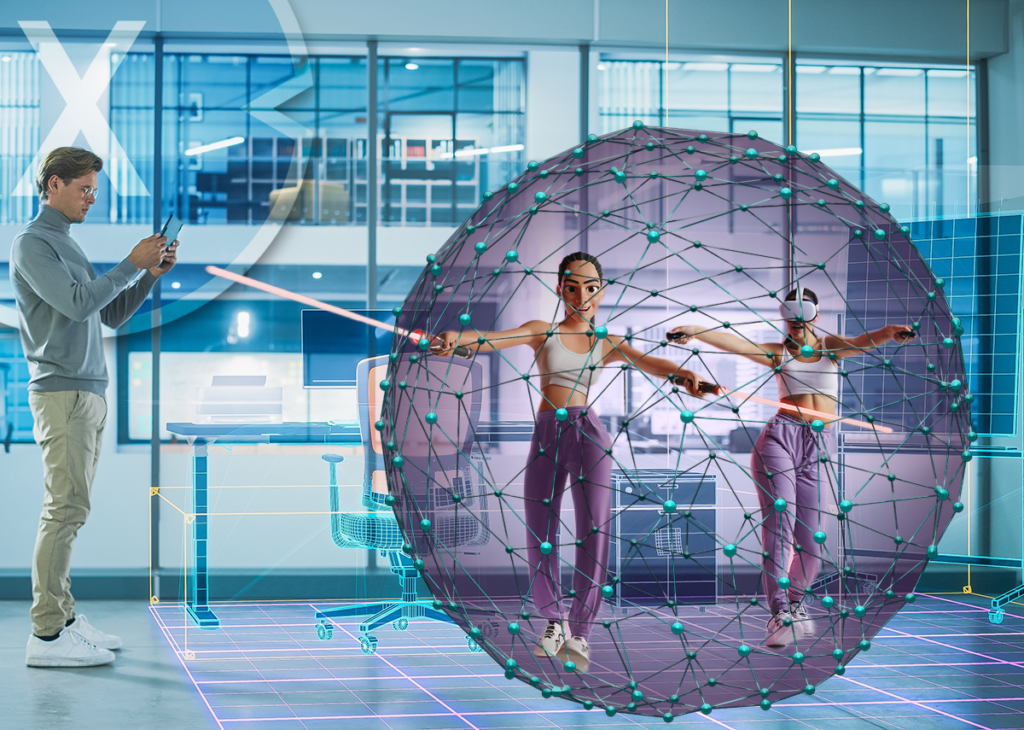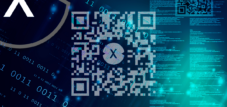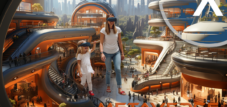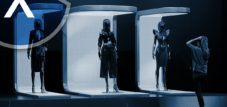Metaverse future scanned: Multidimensional shopping – QR codes or 2D matrix codes as drivers of future logistics and retail
Language selection 📢
Published on: January 3, 2024 / Update from: January 3, 2024 - Author: Konrad Wolfenstein
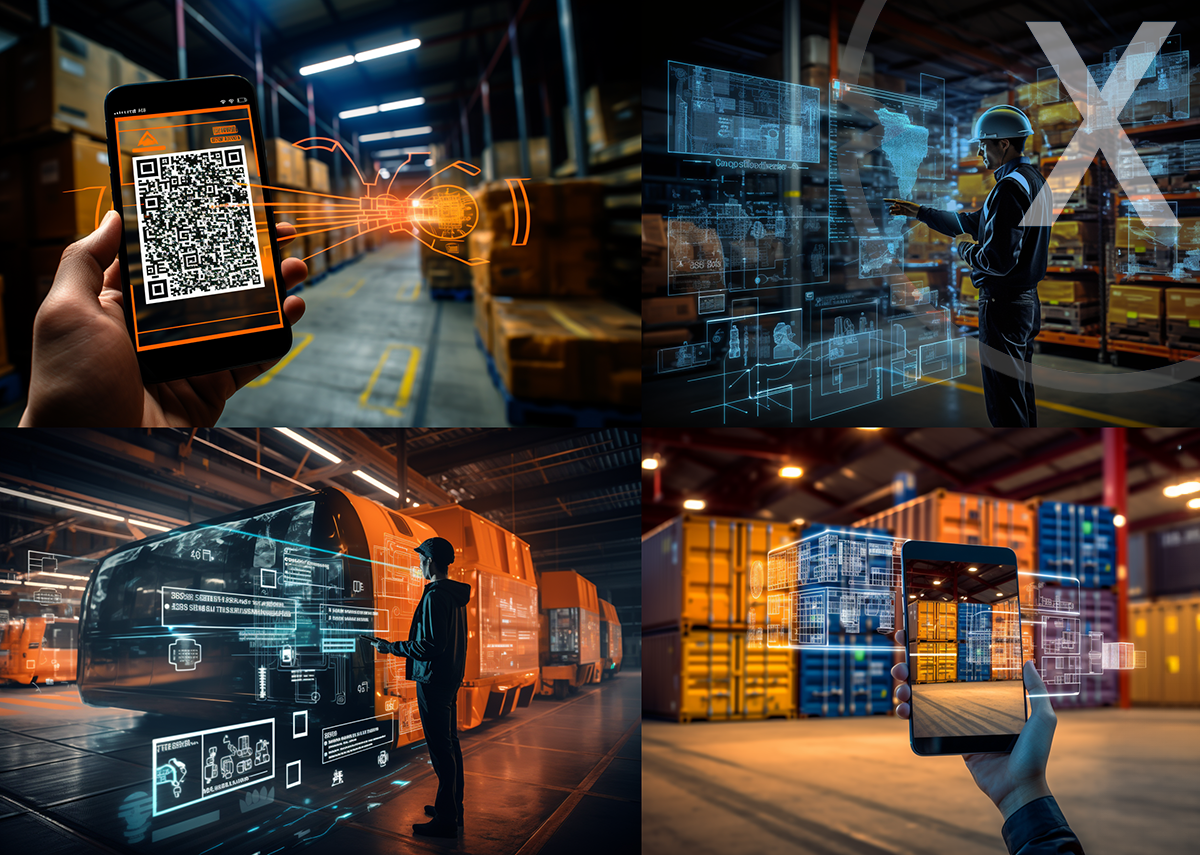
Future scanned: QR codes or 2D matrix codes as drivers of future logistics - Image: Xpert.Digital - AI & XR-3D rendering machine (art photo/AI)
🔳 QR Codes: The Gateway to Digital Expansion 🚀
📦🔄 Logistics and 2D matrix code
QR codes, the small square patterns of black and white pixels, are ubiquitous in today's digital world. Originally developed for the automotive industry in Japan, they have found their way into almost every corner of our lives. But the real breakthrough is still ahead of us: with the introduction of 2D matrix code in 2027, the way we store and access information will fundamentally change.
QR codes are already an integral part of logistics: They facilitate global freight transport through simplified tracking systems and automated processes. However, the 2D matrix code that will be introduced in the future is capable of storing significantly more information and can therefore perform various functions. This means a single code can be used to track packages worldwide, without the need for different barcodes or additional labels. Through global standardization and the ability to store large amounts of data, 2D matrix code will become the backbone of a more efficient, transparent and faster logistics system.
More about it here:
🛍️ Retail and QR Code 📈🔗
In retail, it is becoming apparent that the QR code is becoming a key tool for bridging physical products and digital information. By simply scanning a QR code with their smartphone, customers can instantly access a wealth of information: from a product's origin and manufacturing, to instruction manuals, to interactive shopping experiences. This not only increases transparency and consumer trust, but also offers new marketing opportunities. Retailers can provide personalized content or direct customers directly to their online shop through additional links.
👗 Fashion industry and the QR code revolution 🌐👚
The fashion industry also benefits from the adaptive nature of QR codes. Designers and brands use them to give customers a deeper understanding of their products. Using WebAR, a technology that allows you to view augmented reality content through your smartphone, you can try on items of clothing virtually or view them in 3D before purchasing them. Given the growing awareness of sustainability in the fashion industry, the QR code can also help increase transparency by providing information about materials, production conditions or recycling options.
🌐 2D Matrix Code and Digital Extensions ✨📱
The 2D matrix code, which is intended to replace the previous barcode, is not only used to identify and document products. It can also act as a link to digital extensions of reality, the so-called Metaverse or Extended Reality (XR). Imagine being able to step right into an augmented reality wherever a product is, where you can interact with the product, whether it's a virtual try-on, an immersive product tour, or an interactive user guide.
📑 Value-added product information and 2D matrix code 📘💡
In addition, the new 2D matrix code also enables expanded functions such as storing product information in various formats. Instead of storing a simple URL to a product, companies can now offer more extensive content: for example PDFs with usage instructions, product presentation videos or even entire multimedia brochures.
🤝 Social aspects and the progress of QR technology 👥🌍
All of these innovations have the potential to make shopping a multi-sensory and informative experience. But the introduction of 2D matrix code also raises questions, such as data protection and the speed with which both consumers and companies must adapt to the new system. The issue of the digital divide should also not be neglected: while some have easy access to the latest technologies, others may be excluded from it.
So it's not just about technological innovations, but also about looking at the social impacts and developing solutions that ensure inclusive progress. The QR code or its successor - the 2D matrix code - represents a technological promise for the future that must be designed carefully and responsibly in order to develop its full potential for the benefit of all.
💡 Innovative applications and the future of 2D matrix code 🚀🌟
The advanced applications of 2D matrix code show how it can revolutionize the industry. For logistics, this means further optimization of supply chains through improved tracking and real-time information. In retail, consumers can enjoy a refined shopping experience that emphasizes information sharing and user interaction. The fashion industry presents an opportunity to redefine sustainability and customer engagement.
🔍 Technology, society and the challenges of integration 🌐👥
Given these multifaceted possible uses, it is important that we not only develop and integrate the technology, but also take into account the social contexts in which these technologies are used. We are at the beginning of an era in which the interaction between the physical and digital worlds will become even more complex, more detailed and more far-reaching. The 2D matrix code is the symbol and tool of this new chapter - an innovation that, when used sensibly, can make everyday life easier, transform business models and create new worlds of experience.
📣 Similar topics
- 🛒 The QR code: From logistics to retail
- 🔍 The Future of Information Sharing: The 2D Matrix Code
- 🌐 The 2D Matrix Code and the Metaverse: A New Reality
- 👗 QR codes in the fashion industry: transparency and sustainability
- 📱 The QR code as a bridge between physical and digital worlds
- 🚚 The revolution in logistics: The 2D matrix code
- 🎯 New possibilities with the 2D matrix code: From virtual fittings to immersive product tours
- 📦 More efficient and transparent: The 2D matrix code in logistics
- 🌍 The 2D Matrix Code: A global standardization for fast information
- 💡 The potential of 2D matrix code: multi-sensory shopping and innovative experiences
#️⃣ Hashtags: #QRCode #2DMatrixcode #Logistics #Retail #Fashion Industry
🎯🎯🎯 Benefit from Xpert.Digital's extensive, fivefold expertise in a comprehensive service package | R&D, XR, PR & SEM
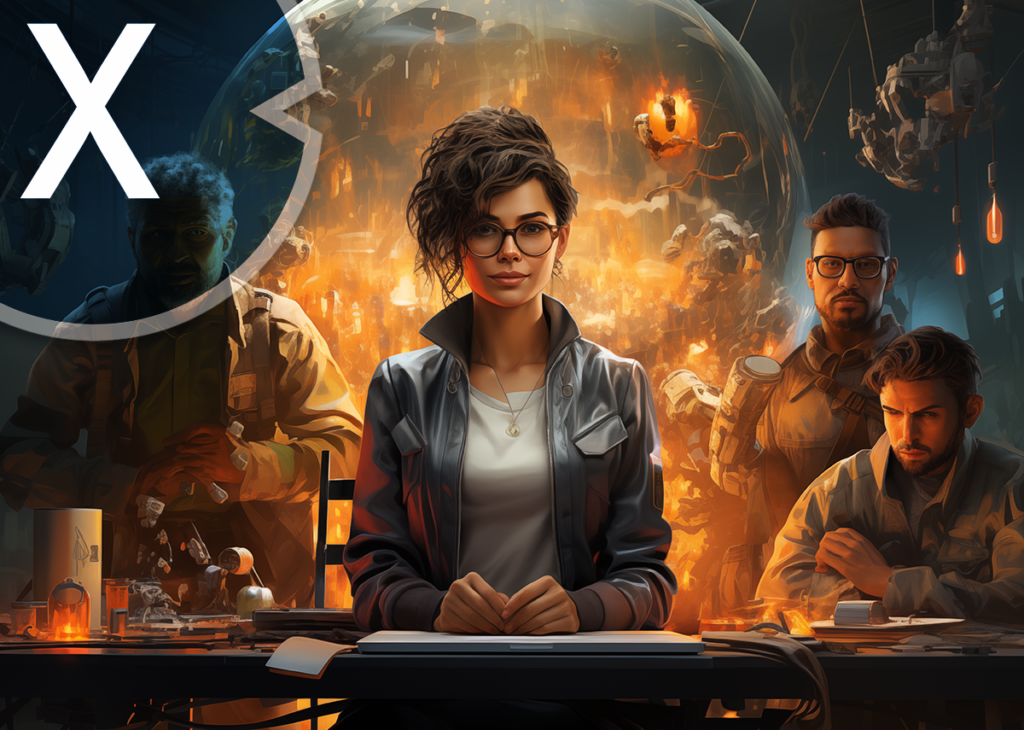
AI & XR 3D Rendering Machine: Fivefold expertise from Xpert.Digital in a comprehensive service package, R&D XR, PR & SEM - Image: Xpert.Digital
Xpert.Digital has in-depth knowledge of various industries. This allows us to develop tailor-made strategies that are tailored precisely to the requirements and challenges of your specific market segment. By continually analyzing market trends and following industry developments, we can act with foresight and offer innovative solutions. Through the combination of experience and knowledge, we generate added value and give our customers a decisive competitive advantage.
More about it here:
🛍️📲 Multidimensional Shopping: The Multilayered Impact of 2D Matrix Codes on Retail and Augmented Realities 🚀👓

Multidimensional Shopping: The Multilayered Impact of 2D Matrix Codes on Retail and Augmented Realities - Image: Xpert.Digital - AI & XR 3D Rendering Machine (Kunstfoto/AI)
In the age of digital transformation, two-dimensional matrix codes, such as QR codes, have revolutionized retail. These small, black and white squares are much more than a trend - they are a central element in the connection between physical and digital shopping worlds. In this context, we look at how 2D matrix codes influence the retail sector and how they serve as a key technology for accessing extended reality (XR).
🏷️🔍 The influence in stationary retail
Let's start with the impact of 2D matrix codes on traditional retail. In a brick-and-mortar store, QR codes are used not only to quickly convey information such as prices or product descriptions to the customer, but also to create an interactive customer experience. When a customer scans a QR code, they can access a variety of content - from detailed product information and customer reviews to augmented reality applications that make it possible to virtually see a product in different variations or view it in three-dimensional space place.
🖇️🛒 Omnichannel experiences
Another benefit of 2D matrix codes in retail is enabling a seamless omnichannel experience. The codes act as a bridge between online and offline shopping by allowing customers to scan products in store and then purchase them through an online platform or receive additional information. This creates an integrated shopping experience that blurs the boundaries between e-commerce and physical retail.
🎮🌐 Augmented realities in use
The potential of QR codes and other 2D matrix codes is further enhanced by their application in the world of augmented realities. XR (Extended Reality), an umbrella term that includes augmented reality (AR), virtual reality (VR) and mixed reality (MR), has transformed shopping into a multidimensional experience that far exceeds the capabilities of traditional retail.
🏠🛋️ AR in everyday life
With regard to AR, customers can use an app on their smartphone or AR glasses to equip a room with virtual objects. For example, with his “Ikea Place” app, Ikea enables customers to virtually place furniture in their own home in order to check the fit and appearance before buying. QR codes play a critical role by making it easy to open such apps and locate the corresponding product within the app.
💥🌀 VR and MR in retail
When using VR in retail, a 2D matrix code can serve as an entry point to a fully virtual shop front. Customers can put on a VR glasses and move through a digital business space in which they not only look at products, but also be able to “touch” and interactively, which enables a profound product interaction that complements or even exceeds the physical in-store experience.
🔗👚 Mixed reality and fit
The use of MR, in turn, allows real and virtual objects to interact with each other in real time. This creates special opportunities for retailers, for example by allowing customers to try out clothing on avatars that match their real body shapes. This technology, often activated by scanning a QR code, helps improve customer satisfaction while reducing return rates.
📊💡 Data and customer understanding
Beyond providing access to virtual experiences, 2D matrix codes also offer retailers the opportunity to collect valuable customer data. When a customer scans a code, the retailer can track their interaction with the product or advertisement, providing insights into preferences and shopping behavior. This data can be used to improve customer service, personalize the shopping experience, and optimize inventory management.
❤️🎁 Customer loyalty through 2D codes
Likewise, 2D matrixcodes open up new ways in customer loyalty. They facilitate access to loyalty programs or exclusive offers that go beyond the traditional “punch cards”. By enabling individualized experiences and rewards, these codes promote a stronger connection between brand and consumer.
🔒🛡️ Privacy and security
However, customer safety is also of great importance, especially when it comes to data captured during scanning of 2D matrix codes. To maintain customer trust and respect privacy regulations, retailers must ensure that data collected through QR codes is protected and treated in accordance with legal requirements.
💳📱 Mobile payment and 2D matrix codes
Added to this is the importance of mobile payments, another area that is significantly influenced by 2D matrix codes. QR codes are commonly used to make payments quickly and securely. With mobile payment, customers scan a QR code at checkout and the payment is automatically processed via their connected bank account or digital wallets. This type of transaction not only promotes convenience but also reduces the physical touch of money or card readers, which is particularly relevant in times of health concerns such as the COVID-19 pandemic.
♻️🌱 Sustainability and 2D matrix codes
Another aspect that should not be overlooked is the lasting impact of 2D matrix codes. In a world where consumers increasingly value sustainability, QR codes enable a paperless option for invoices, receipts and product information, reducing paper use and reducing environmental impact.
🔄📦 Supply chain optimization
At the logistics level, 2D matrix codes optimize the supply chain by enabling improved traceability of products. Unlike traditional barcodes, QR codes carry more detailed information, and their scannability leads to more efficient warehouse operations and product tracking.
🔄💡 Integration and future prospects
The comprehensive integration of 2D matrix codes therefore has a multi-dimensional impact on retail as well as on the customer experience. These codes enable merchants to create highly customized and enriched experiences that merge physical and digital. Not only do they function as a direct interface to augmented realities, but they also play a key role in collecting data that forms the basis for future innovation and personalization of customer contact.
🚀👥 Future-oriented developments
In the future, 2D matrix codes could reach even further. Their development does not stand still and they are expected to become increasingly more interactive and user-friendly. New applications could evolve toward contextual services, where scanned codes provide information based on current location, purchasing behavior, or even the time of scanning.
🧠💡 AI and personalized content
Additionally, 2D matrix codes could be used in conjunction with artificial intelligence (AI) to create dynamic content that changes in real time depending on the user scanning the code. This would allow for a hyper-personalized customer experience that is previously unattainable.
🤖🛍️ The 2D matrix code is a fascinating element of modern marketing and retail management
Ultimately, 2D matrix codes are a fascinating element of modern marketing and retail management. Their ability to act as a catalyst for the transition between physical and digital spaces makes them a key technology for the retail of the future. They not only expand the dimensions of the shopping experience by simplifying access to AR, VR and MR, but also make behind-the-scenes operations more efficient and customer-focused.
📣 Similar topics
- 🔍 From QR codes to augmented reality: The future of retail
- 🌐 The Potential of 2D Matrix Codes: A Multidimensional Shopping Experience
- 🛒 QR codes in retail: connecting the physical and digital worlds
- 👥 The interaction evolution: How 2D matrix codes are transforming retail
- 🚀 2D matrix codes and XR: ushering in a new era of shopping
- 🌍 The global omnichannel revolution: QR codes as a link between online and offline
- 🤖 AR, VR, MR: 2D matrix codes as a door opener for augmented realities in retail
- 💡 Customer-centric shopping: The new possibilities through 2D matrix codes
- 🏆 Data-driven retail: How QR codes improve customer experience
- 🌱 Sustainable shopping with QR codes: The green side of retail
#️⃣ Hashtags: #Retail #2DMatrixcodes #XR #QRCode #Omnichannel
🗒️ Xpert.Digital: A pioneer in the field of extended and augmented reality

We are there for you - advice - planning - implementation - project management
Xpert.Digital - Pioneer Business Development
Smart Glasses & KI - XR/AR/VR/MR industry expert
Consumer metaverse or meta -verse in general
If you have any questions, further information and advice, please feel free to contact me at any time.
I would be happy to serve as your personal advisor.
You can contact me by filling out the contact form below or simply call me on +49 89 89 674 804 (Munich) .
I'm looking forward to our joint project.
Xpert.Digital - Konrad Wolfenstein
Xpert.Digital is a hub for industry with a focus on digitalization, mechanical engineering, logistics/intralogistics and photovoltaics.
With our 360° business development solution, we support well-known companies from new business to after sales.
Market intelligence, smarketing, marketing automation, content development, PR, mail campaigns, personalized social media and lead nurturing are part of our digital tools.
You can find out more at: www.xpert.digital - www.xpert.solar - www.xpert.plus



